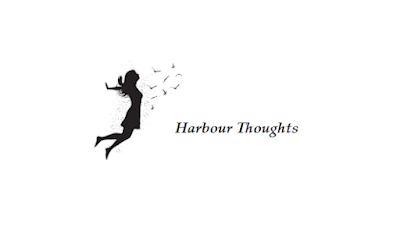Dreams
By Edgar Allan Poe
Oh! that my young life were a lasting dream!
My spirit not awakening, till the beam
Of an Eternity should bring the morrow.
Yes! though that long dream were of hopeless sorrow,
'Twere better than the cold reality
Of waking life, to him whose heart must be,
And hath been still, upon the lovely earth,
A chaos of deep passion, from his birth.
But should it be — that dream eternally
Continuing — as dreams have been to me
In my young boyhood — should it thus be given,
'Twere folly still to hope for higher Heaven.
For I have revelled when the sun was bright
I' the summer sky, in dreams of living light
And loveliness, — have left my very heart
Inclines of my imaginary apart
From mine own home, with beings that have been
Of mine own thought — what more could I have seen?
'Twas once — and only once — and the wild hour
From my remembrance shall not pass — some power
Or spell had bound me — 'twas the chilly wind
Came o'er me in the night, and left behind
Its image on my spirit — or the moon
Shone on my slumbers in her lofty noon
Too coldly — or the stars — howe'er it was
That dream was that that night-wind — let it pass.
I have been happy, though in a dream.
I have been happy — and I love the theme:
Dreams! in their vivid coloring of life
As in that fleeting, shadowy, misty strife
Of semblance with reality which brings
To the delirious eye, more lovely things
Of Paradise and Love — and all my own! —
Than young Hope in his sunniest hour hath known.
Poem Analysis:
Edgar Allan Poe’s poem Dreams explores the tension between the ethereal nature of dreams and the harshness of waking reality. Through lush imagery, reflective tone, and philosophical depth, Poe expresses a longing for the escapism dreams provide while confronting the inevitable limits of mortal existence.
Themes
- Dreams as Escapism: Poe portrays dreams as an alternative to the "cold reality" of life. The speaker prefers the vivid and emotional world of dreams, even if those dreams are tinged with sorrow. This reveals Poe’s characteristic fascination with the boundary between imagination and reality.
- Joy and Sorrow Intertwined: The speaker finds happiness in dreams, even in moments of "hopeless sorrow." This paradox underscores Poe's idea that beauty and intensity, whether joyful or sorrowful, make life meaningful. Dreams, with their heightened emotionality, provide a refuge where even despair can be poetic.
- The Fragility of Happiness: While the speaker cherishes dreams for their "vivid coloring," they remain fleeting and intangible. This impermanence mirrors the ephemeral nature of happiness in life, a recurring motif in Poe’s work.
- Reality versus Imagination: Poe contrasts the chaotic, passion-filled reality of life with the controlled and idealized world of dreams. In dreams, the speaker finds "living light and loveliness," while waking life is described as a "chaos of deep passion." This tension highlights the allure of the imagination as a means to transcend life's suffering.
Structure and Form
The poem consists of a single stanza written in rhyming couplets (AA, BB, etc.), a structure that reinforces the sense of cohesion and balance in a subject that otherwise grapples with disarray. The steady rhythm mirrors the continuity of dreams, while the fluid enjambment reflects the hazy and boundless nature of the dream world.
Literary Devices
- Imagery: Poe employs vivid imagery to evoke the dreamscape:
- "Dreams! in their vivid coloring of life" captures the heightened intensity of dreams compared to mundane reality.
- "I' the summer sky, in dreams of living light" conjures the warmth and radiance of an idealized world.
- Contrast: The poem juxtaposes dreams and reality, particularly in lines like "Yes! though that long dream were of hopeless sorrow, 'Twere better than the cold reality." This stark contrast emphasizes the speaker’s disdain for waking life.
- Repetition:
- The word “dream” recurs throughout the poem, underscoring its centrality to the speaker's thoughts.
- The repeated line, “I have been happy,” reinforces the speaker’s gratitude for the happiness found in dreams, despite their fleeting nature.
- Symbolism:
- “The chilly wind” and “the moon” symbolize external forces that intrude upon the speaker's dream world, reminding them of the impermanence of such experiences.
- “Paradise and Love” represent the unattainable ideals that the speaker finds in dreams but lacks in waking life.
- Alliteration and Sound: Poe's use of soft sounds and alliteration, such as in “shadowy, misty strife” and “semblance with reality,” creates a dreamlike, flowing quality that mirrors the subject matter.
Philosophical Undertones
Poe’s Dreams grapples with existential questions about the nature of happiness and the role of imagination. The poem suggests that while dreams may be an escape from life’s chaos, they are not a permanent solution. Instead, they highlight the human condition’s reliance on ephemeral joys to endure reality’s harshness.
Dreams by Edgar Allan Poe is a poignant meditation on the tension between reality and imagination, the fleeting nature of happiness, and the human yearning for a world untethered from suffering. Through rich imagery and a reflective tone, Poe crafts a narrative that celebrates dreams as both a refuge and a reminder of life’s impermanence. Ultimately, the poem underscores the bittersweet beauty of dreams, which offer glimpses of "Paradise and Love" but remain as transient as the night itself.
